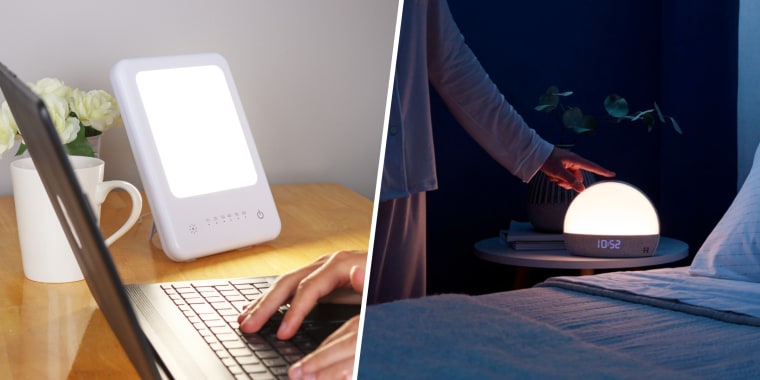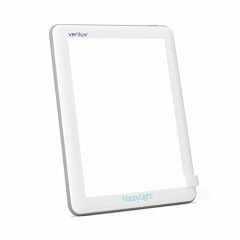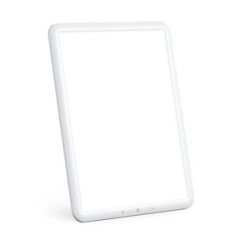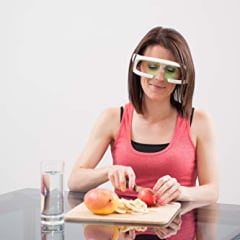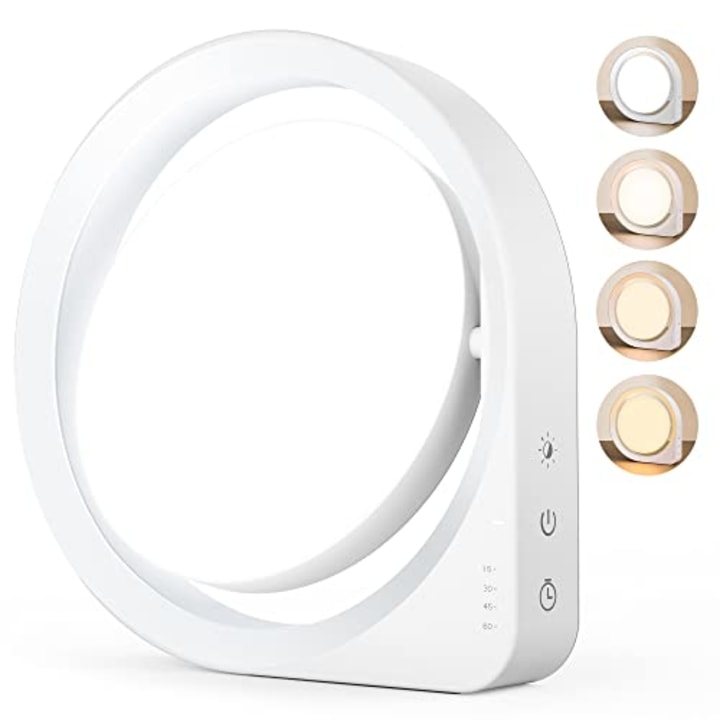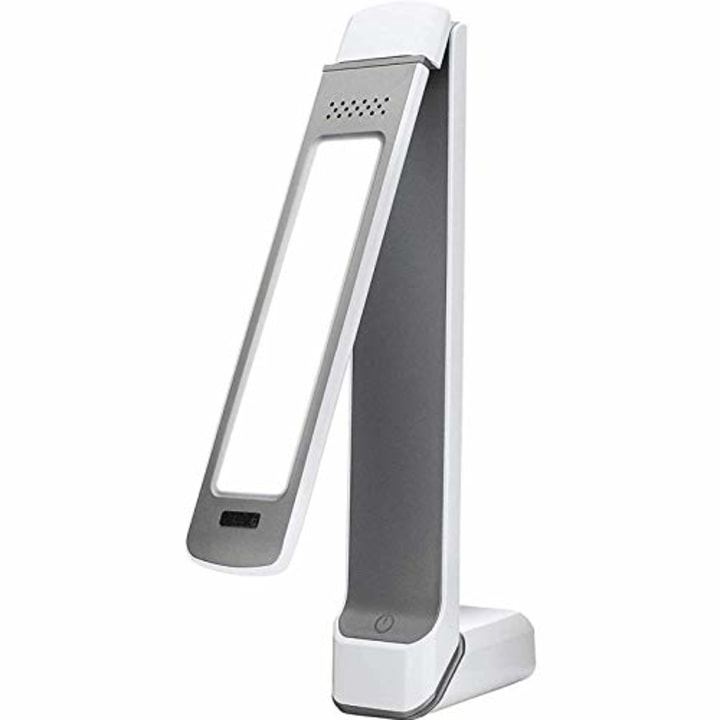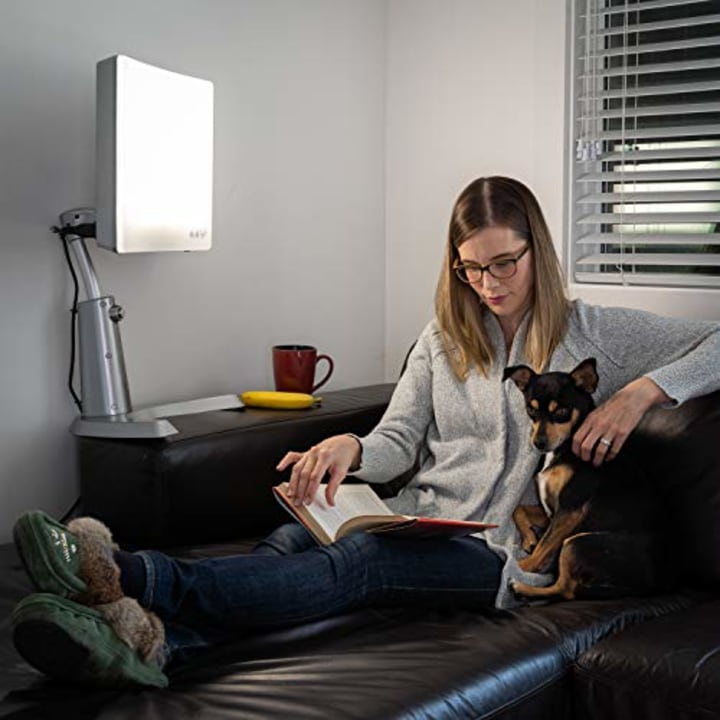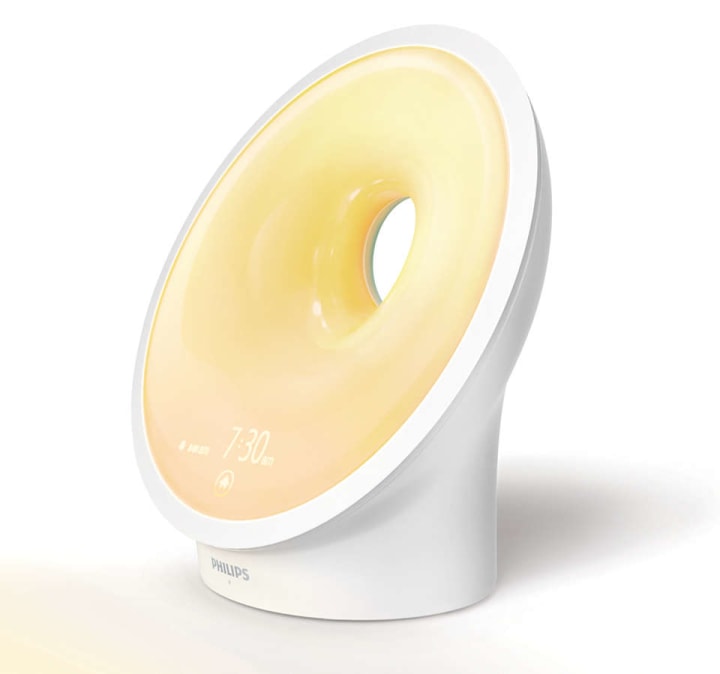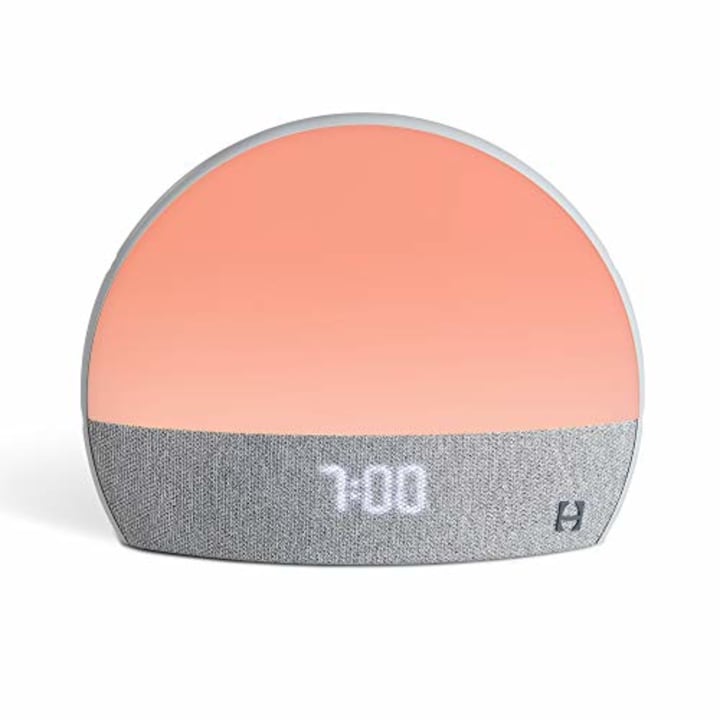Falling asleep can sometimes be a struggle, especially when you're feeling stressed or overtired, so we're always eager to learn about anything that can help us catch some zzz's more quickly. Light therapy lamps have been continuing to gain a loyal following, and they're supposed to help whip your sleep routine into shape, but Shop TODAY was curious to know: Are they really worth the hype?
So we polled several sleep specialists to find out what light therapy lamps are, when they're most beneficial and how they work. We also rounded up a few light options for every budget so you can try them for yourself.
How light and sleep are connected | How does light therapy work | Light therapy lamps to try | How we chose | Meet the experts
How light and sleep are connected
There's nothing worse than lying in bed as your mind races and you beckon sleep to come. It's a scene that most of us are all too familiar with, and the mere thought of a device that helps lull you into a peaceful slumber is pretty intriguing.
We've all been told to limit our blue light exposure at night since it can disrupt our sleep patterns, so the idea of a light that can actually help you sleep might seem a bit counterintuitive. But according to Dr. Carol Ash, sleep specialist for RWJBarnabas Health, the relationship between light and sleep is more complicated than you think.
"Light is the strongest signal your brain needs to set its internal clock. That clock regulates patterns of sleep and wake called circadian rhythms and all physiologic rhythms in your body," she told Shop TODAY. "Without light, your physiology would be in chaos. You could find it hard to fall asleep or wake up at the right time, or even stay asleep. That can cause fatigue, mood disorders and depression."
Just as it can hurt your sleep routine, exposure to light at the right time can help adjust an internal clock that's out of sync.
"Exposure to light at the right time can reset the clock. Late night light exposure signals the brain that it is not time to sleep. The internal clock adjusts rhythms to set your bedtime for later. Light in the early morning sets an earlier bedtime and rhythms so you feel refreshed when it is time to get up," Ash explained.
How does light therapy work?
Different forms of light therapy are often used in sleep medicine for circadian rhythm disorders, and the practice can be used to help you fall asleep at night or wake up more easily in the morning.
"Light can help with several sleep disorders such as delayed sleep syndrome (night owl), or advanced sleep syndrome (morning lark) or jet lag. It can also help with mood disorders such as seasonal affective disorder or depression. With consistent use, it might take several weeks to see results, so be patient," Ash said.
According to Sue X. Ming, MD, PhD, a neurology professor at Rutgers New Jersey Medical School, a dimmable light can be very beneficial to your nighttime routine if you struggle to fall asleep.
"When it is close to your bedtime, say two hours before you go to sleep, you would dim your light so that your melatonin starts to secrete, your heart rate and blood pressure lower and your mind quiets," she explained. "Then one hour before bed, you dim the light further and melatonin levels further increase and your body temperature lowers slightly. Sleep comes to you then."
On the opposite end of the spectrum, a light that gradually gets brighter in the morning can help wake you up more gently than a blaring alarm clock.
"Light therapy lamps are specifically designed to trigger that 'daytime' signal in the brain. This signal can have important benefits when used in the morning and can help get your rhythms in sync for the day, improve daytime mood and energy levels, and also help set your body up for healthy sleep later that night," Michael A. Grandner, director of the University of Arizona College of Medicine's sleep and health research program and the school's behavioral sleep medicine clinic, said.
The concept of light therapy to assist with sleeping isn't exactly novel, but a crop of new lights you can use in the comfort of your own home have certainly sparked the attention of a wider range of people hoping to get a good night's sleep.
No two light therapy lamps are created alike, and they can come in many shapes and sizes. But they all have one thing in common: You should follow the instructions and consult with your doctor before using one.
"You have to know what time of day to use it. If you use it at the wrong time, it can make things worse," Philip R. Gehrman, associate professor of clinical psychology in psychiatry at the Hospital of the University of Pennsylvania, said.
Light therapy lamps to try
MediAcous Light Therapy Lamp
- Multiple light shades
- Short power cord
Commerce editor Amanda Fama loves this lamp and relies on it for added warmth. "It offers tons of different light shades and brightness options (my favorite is the warm light). I didn’t have any direct sunlight in my apartment last year, and this helped tremendously," says Fama.
Miroco UV-Free Light Therapy Lamp
- Easy to adjust
- Bigger than expected
Ash noted that this lamp is an affordable option if you're looking to give light therapy a try. The compact design has a built-in timer that can run between 10 minutes and an hour, and the UV-free light is safe for eyes.
Verilux HappyLight
- Great size for portability
- Can be very bright
At only $40, the UV-free Verilux HappyLight is a "less expensive option that will still get the job done," according to Ash. The US-based company made this LED lamp pretty easy to use with a simple on/off button, and the device can be positioned either horizontally or vertically depending on your preference. The detachable stand also makes it easy to transport the lamp from room to room, and the device can help improve sleep, mood, focus and energy.
Circadian Optics Light Therapy Lamp
- Easy to use
- Can be very bright
Not sure what to look for while purchasing a light therapy lamp? Ash had one important piece of advice: "You always want a lamp that provides 10,000 lux." Circadian Optics' lamp certainly checks off that box and has an average 4.6-star rating on Amazon. There are three settings that let you can customize how bright you want things to get. Whether you use it to help you combat the winter blues or help you wake up in the morning, it's all in your hands.
Carex Day-Light Classic Plus Bright Light Therapy Lamp
- Easy to assemble
- Can break apart easily
If you're looking for something a bit fancier and are willing to spend a bit more, Ash recommends Carex's popular light therapy lamp. The full-spectrum light box has two settings and the LED BrightZone Technology delivers the recommended 10,000 lux. The best part? The LED light features a safe, glare-free screen and comes with a flexible stand that lets you aim the light wherever you'd like.
Philips SmartSleep Sleep and Wake-Up Light
- Great quality
- Can be dim
Want to use light therapy to help you at night and in the morning? The SmartSleep lamp from Philips features both sunset and sunrise simulations and a RelaxBreathe feature with light-guided breathing that calms you as you prepare to fall asleep. It comes complete with multiple light settings and lets you wake up with music from nature sounds, ambient music or local radio stations.
Re-Timer Light Therapy Glasses
- Easy to use
- Can be uncomfortable
If you're using light therapy for its general energy and mood-boosting benefits, you don't have to necessarily use one in the bedroom. According to Grandner, light therapy glasses are also an option. This UV-free pair from Re-Timer uses blue and green light and is equivalent to a 10,000 lux lamp.
"In recent years, scientific advances have shown that light in the blue-green spectrum has the greatest effect on the clock. So modern light therapy devices tend to use light in this frequency range because it takes less light to get the same effect," he said.
Hatch Restore
- Many color options
- Pricey
Both sounds and light can help create an optimal sleep routine and Hatch's popular smart light helps on both fronts. The soft-glow reading light helps wind you down at night and a mix of red, orange and white lights mimic a natural dawn in the wedding before any alarm sounds ever go off. You can control the light via an app or by touch, making it a pretty versatile option.
How we chose the best light therapy lamps
The Shop Today team rounded up the best light therapy lamps based on expert reviews, market research and Shop TODAY editor picks. We consulted sleep specialists to find out how light and sleep are connected and chose options that are most effective in helping secure a good night's sleep.
Meet the experts
- Dr. Carol Ash, DO is a sleep specialist for RWJBarnabas Health.
- Sue X. Ming, MD, PhD is a neurology professor at Rutgers New Jersey Medical School.
- Dr. Michael A. Grandner, PhD, MTR, CBSM, FAASM is the director of the University of Arizona College of Medicine’s sleep and health research program and the school’s behavioral sleep medicine clinic.
- Dr. Philip R. Gehrman, PhD, CBSM, FAASM is the associate professor of clinical psychology in psychiatry at the Hospital of the University of Pennsylvania.
